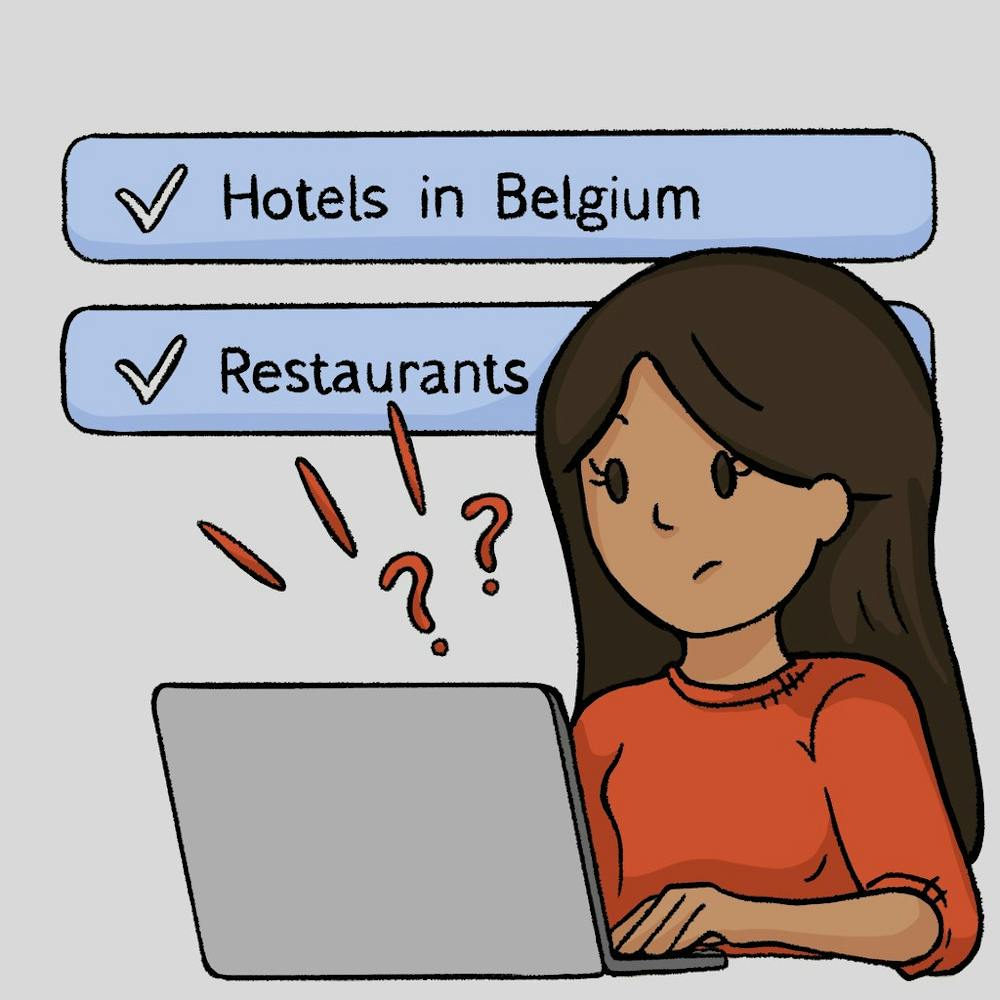Miami University Dolibois European Center (MUDEC) students were itching to begin their travels after the first week of classes; you could feel the buzz in the classroom. Unfortunately, travel choices are slightly restricted during the first month of the program, as students must stay in Luxembourg for the first four Fridays for orientation sessions.
This was a piece of information that caught me and many other students off guard, as we were not informed of this until after accepting admission. However, even with one less day of travel, students can take shorter trips to bordering countries. Luckily, Luxembourg has three neighbors.
After our first orientation session ended at 2:30 p.m., MUDEC students scattered, mostly in the direction of Bruges, Belgium. A five-hour travel day began, and I’m not sure how, but Miami students tend to find one another, even across the world.
I hopped on this Bruges trip through a chain of invites and, as implied by the headline of this column, this decision did not include much research. None at all, actually. I booked a Friday afternoon train ticket via Trainline and a bed in a hostel via Hostelworld – two resources all students wanting to go abroad should know of – and was ready to embark.
Despite some less-than-ideal circumstances I’ll detail below, Bruges was a fantastic first trip. The city was fun and safe, and had plenty of opportunities for good food, drinks and shopping. I’d recommend Bruges as a first weekend trip for any Miami student new to exploring Europe.
Bruges, Belgium
After four train rides, my friends and I finally arrived in Bruges around 8 p.m. Our hostel was about a 15-minute walk from the train station, which I reluctantly trekked with my travel backpack. But I felt more excited about the new city surrounding me.
Our stay at Lybeer Travellers’ Hostel first caught me off guard about this trip. Going into it, I had a conceptualized idea of what a hostel is, though this one was less than ideal.
The room was maybe half the size of my studio apartment, and cramped with four sets of bunk beds. We had to make the beds ourselves after a long day of travel, which another traveler told us was unusual. We were also told most hostels have curtains on the beds for more privacy and some hostels are female-only.
This one was not, and while not an issue this time, I would opt for that choice next time. Lastly, this hostel did not have lockers for our bags, as we expected it to. This left us relying on two things: a backpack next to our heads while we slept and the mere trust of our new roommates. Once again, this worked out fine, but something to research next time.

Views of the buildings in Bruges from the boat tour.
However, hostels allow you to meet people and receive advice from travelers who have been doing this longer than you, so there were some silver linings. It’s also important to note that (some may say) I’m slightly “high maintenance,” so if the described scene doesn’t sound like a big deal to you, you would likely be fine in any hostel.
Enjoy what you're reading?
Signup for our newsletter
After somewhat settling in, we decided to seek out our first Belgian beer at Le Trappiste, a cave-like pub with 27 beers on tap. I don’t consider myself an avid beer drinker, so this was rather intimidating. I chose number 21, a raspberry-infused beer. While I initially eyed the drink feeling weary about its dark rouge appearance, the beverage was delicious. Some Belgian beers are fruit-based and closer to a cider than traditional beer, which I enjoyed.
For our first and only full day, we walked to get Belgium’s finest delicacy for breakfast: a waffle. This was no ordinary waffle — it was a Belgian waffle, topped with Belgian chocolate and strawberries. I don’t think any other breakfast food will compare to that waffle; enjoying it was a near out-of-body experience.

The Belgian waffle I had for breakfast with Belgian chocolate, strawberries and whipped cream.
For a carb-lover like me, Bruges continued to be the dream. At lunchtime, we enjoyed Belgian “frites” from The Potato Bar. These were french fries that came with an array of sauces including mayo (typical to Belgian cuisine), “Cheese-o-Naise” peppercorn (similar to a Cane’s sauce) and truffle. While I’d argue that America has equally perfected the french fry and accompanying sauce, these were fantastic nonetheless.
In addition to its food, Bruges also has great shopping. I found items at chain stores like H&M, as well as local second-hand vintage stores and flea markets, which are much more affordable. It’s also fun to get unique pieces from different places around the world.

A stand of trinkets at the flea market on the river.
The highlight of our trip to Bruges was the canal tour through the main stretch of the city. A 30-minute tour cost 15 euros, and it was entirely worth it. Not only did I get a comprehensive tour of the city on the water, but I also learned about the history of Bruges, which spans quite a long time. So far, this has been my favorite experience and what truly made me feel like I was “in Europe.”
Another area of research I’d advise: look into restaurants before dinner. Finding a table for six without reservations on a Saturday night was not the easiest task, and as a result, I ended up with a $35 bill for a salad and a glass of wine: a great but expensive meal. Research beforehand would have prevented this.
Despite some unexpected bumps in the cobblestone road, Bruges was an experience I wouldn’t trade for anything. Even after one weekend trip, I feel myself becoming a more competent and resilient version of myself, which is precisely what should be happening during a study abroad experience.
Raquel is a junior political science and journalism student. She has written and now edits for The Student since her first year in the Campus & Community section and especially enjoys political reporting. This semester, she will be writing several columns about her time in Luxembourg and other travels.




